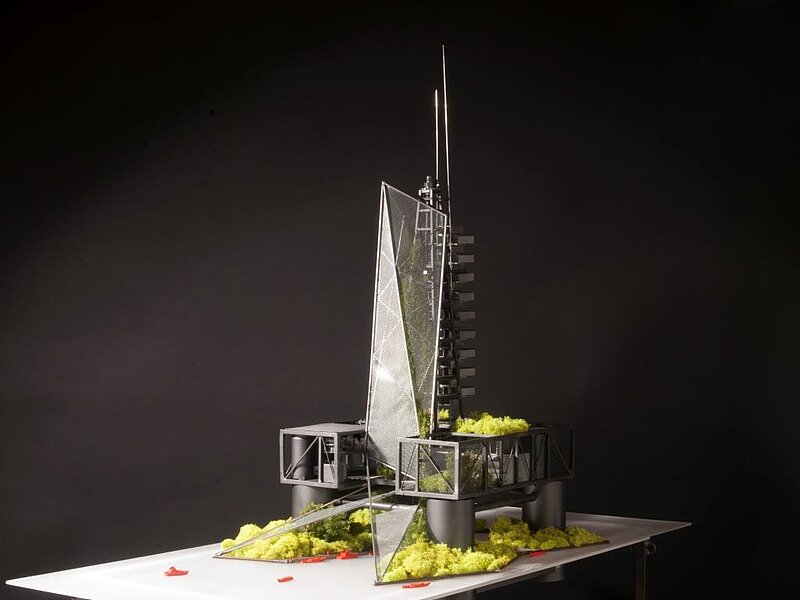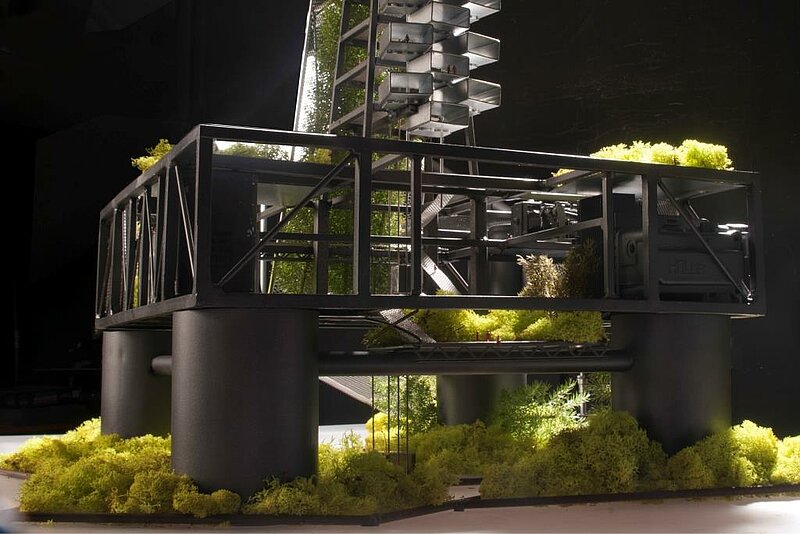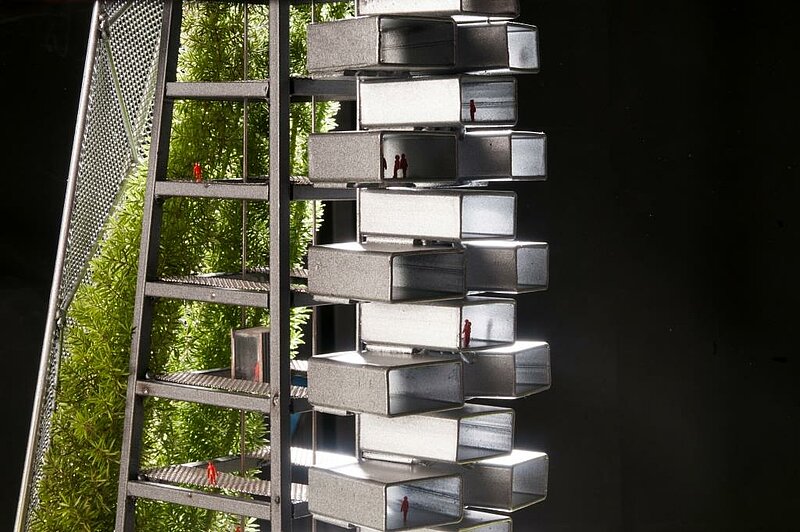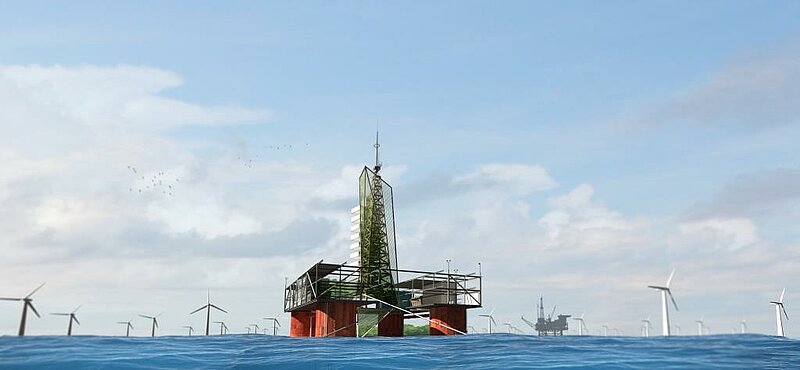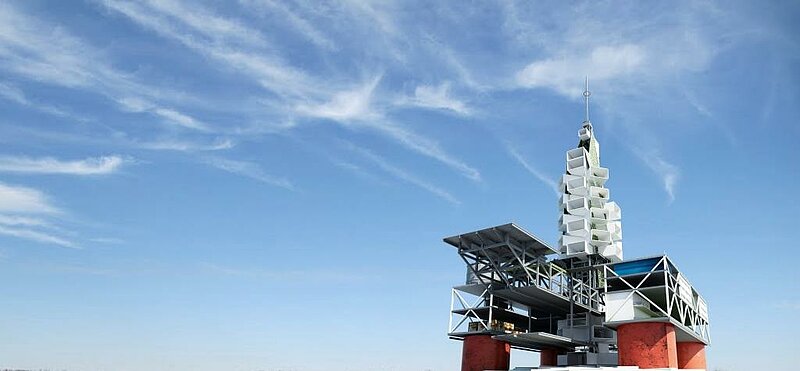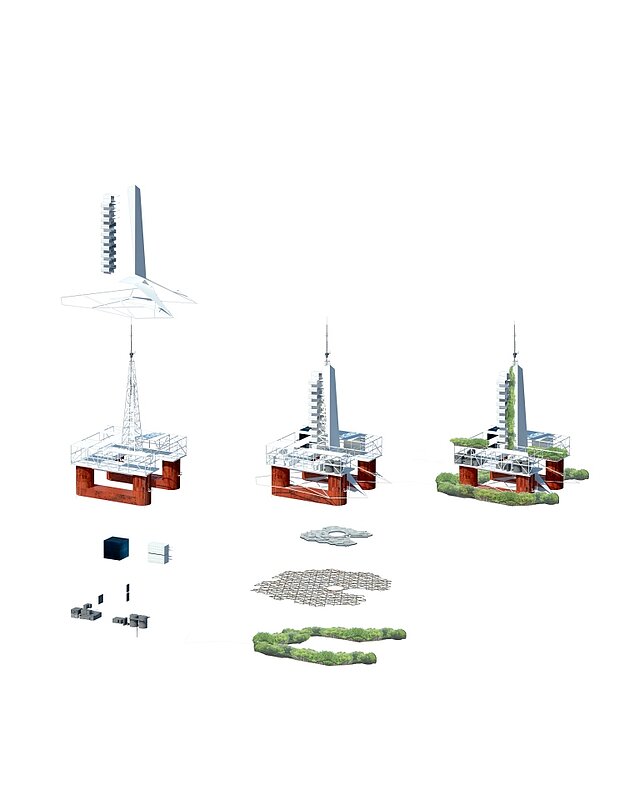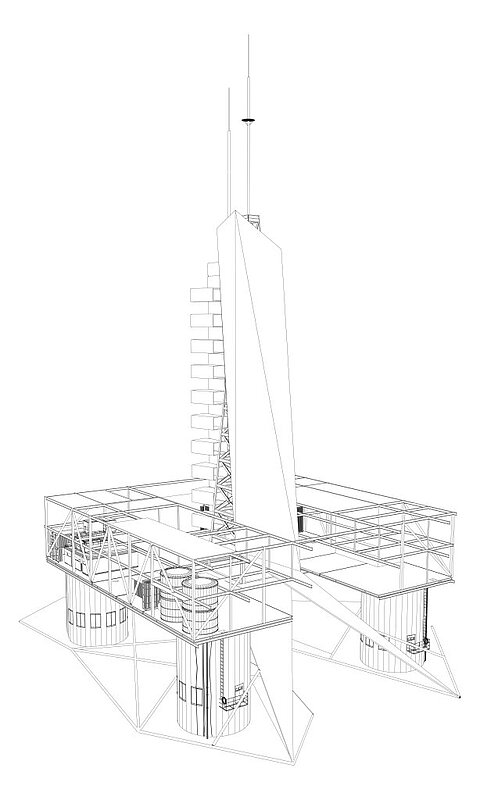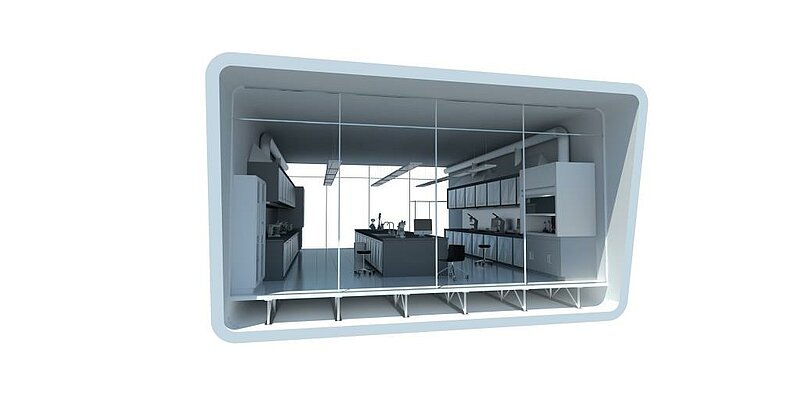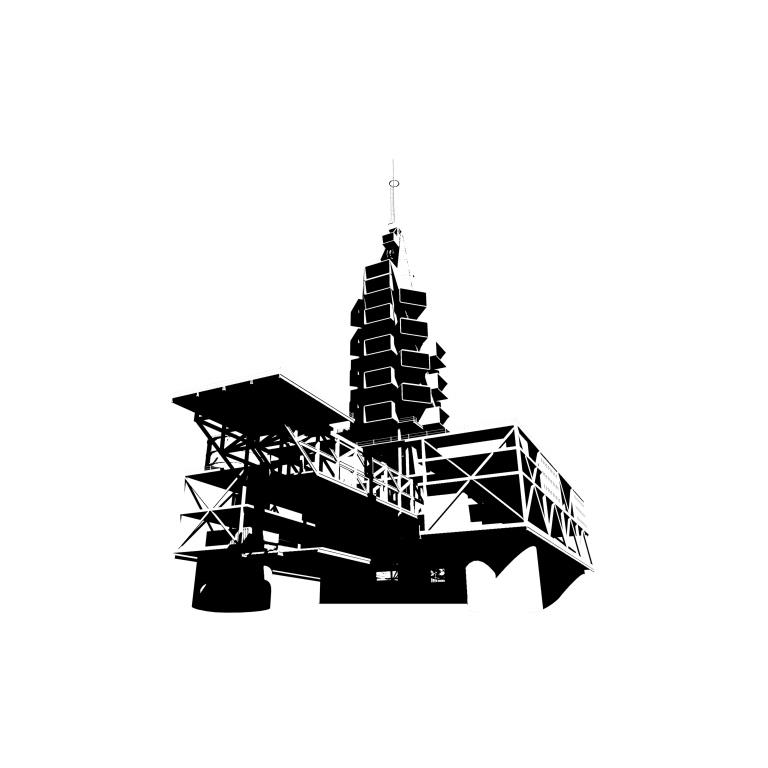in DEEPWATER Platform Re-Rigged to Sustainability
- Year2015
- LocationSea
Through the study of the lasting effects of the BP oil spill, this design project will restore the region, as well as produce and study wind, solar, and wave energy. This thesis explores the idea that decommissioned or disaster effected oil rigs are environmentally valuable left in place. Bridging past and future energy production, brown to green, I will develop an architecture that transforms these floating shells of industry into ecosystems conducent not only to repair but render their original use obsolete. Creating a floating environment set on fostering microbial and algae research to clean the site of the Deepwater disaster and then produce sustainable ocean energy.
The cost of permitting, plugging, removing, and disposing of existing wells is greatly outweighed by their potential benefit as an existing grid of floating stations to re-purpose for green energy. There is the tension between the two powerful ocean resources, a clean functioning ecosystem that harbors a massive fishing industry and tourism; and the fossil fuels that maintain our urban sprawl lifestyles. The global increase in population, its concentration in cities, and the development of emerging countries lead to a big increase in energy need. This ever-expanding demand for fossil fuels has pushed its collection to the ends of the earth and with it brought the potential for environmental damage and even disaster. There are well over 3,000 active oil and gas platforms currently active in the Gulf of Mexico. These inherently grimy and hazardous places can be repurposed to foster their own revival.
As a floating marine research and education center, Project DEEPWATER is the point of flux where architecture, engineering, and science leave their rigid disciplines and meet to produce more effective platform for launching experiments, while at the same time being a grand experiment in of itself. Can a platform set on restoring a disaster-ridden ecology; become a successful floating self-sustaining ecology in and of itself? Addressing larger issues such as climate change, rising sea levels, and over population. A shell of industry becomes the beginnings of a new habitable ecosystem, experimenting with the miles of drilling pipe left behind. The members will be a networked structure, woven to support vertical ecology up the side of the existing steel drilling derrick. This high-strength steel is abundant, on-site, and weather resistant. This sustainable example for a decommissioned oil rig is not an answer to every question it addresses, more, an example and conversation starter between the fields of study than can make a real difference.


